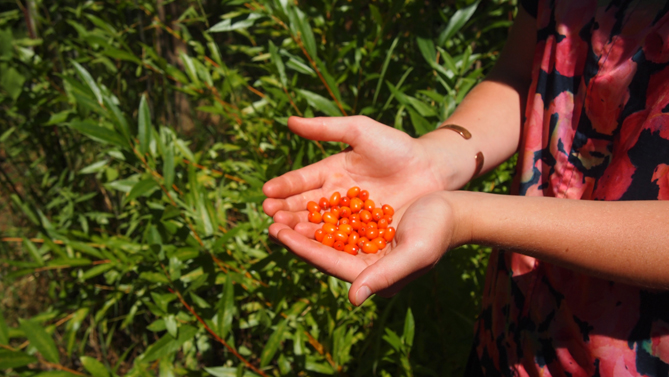>> Margaret Hantiuk
Adaptation means being flexible and strategically implementing new ways to cope with conditions that are beyond our control. Climate change doesn’t just mean a warming climate; it means more and longer durations of weather extremes: hot sun and more drought, more wind and storms and torrential rains. Here, the erratic jetstream may mean more arctic outflow weather coming up over the Rockies when the polar vortex plunges south. What can we do as gardeners?
For cold and winter crops:
- Look for plant and seed species, varieties/cultivars that are tough.
- Be prepared to protect. Snow is protective—severe weather without it is worse and freezing winds add to cold as wind chill.
- Keep an eye on the temperatures and the forecasts. When severe cold—below -5°C—or freezing winds are predicted, throw blankets, newspaper, plastic tarps or conifer boughs over winter crops or tender plants.
- Try space blankets as a cover (found at Canadian Tire) in severe weather.
- Grow a variety of crops and test different varieties of each.
- When purchasing seeds or plants, pay attention to bloom times and maturation dates to ensure they match our locale.
- Build cold frames—you can use scrap lumber and old windows—to extend growing season.
- Use cloches over delicate plants in early spring or late fall. They can be purchased or made using remay tents, plastic milk jugs with bottoms cut out, etc.
- Buy or build a greenhouse. They are easily built along the south side of a house with plastic and scrap lumber.
- Find warm spots in your yard for early and for winter crops. Look along the south or west side of a house, garage or shed, near edge of south decks, etc.
- Keep records and weather logs to learn about your micro-climate.
- Start with the easy crops—i.e. broccoli is easier to grow than cauliflower.
- Christmas lights draped around shrubs and over covered crops can help.
- Jugs of water in greenhouses and cold frames slows air freezing.
For summer heat and drought:
- Use grey water from your house— kitchen sink, bath (change to softer soaps).
- Water storage is key in our locale. Collect rainwater off of your roofs. Rain Barrels can be purchased.
- Mulch heavily around plants—at least 2 to 3”. Don’t cover crowns and leave breathing space around stems and trunks.
- In hot weather, when seeding for winter crops, cover with a few layers of newspaper, cardboard, remay, plastic trays, netting, etc. to keep moist, cool.
- Improve the drainage of your soil; compost helps. Build raised beds for plants needing good drainage and/or better soil.
- Dig swales or a pond to collect rainwater to use for irrigation later.
- Drain tiles can be dug in to move water away in low spots.
- Use low-flow and drip irrigation systems for water efficiently.
- Sprinklers and some irrigation systems can be gravity fed from rain barrels.
- Choose drought tolerant seed varieties that don’t bolt in heat.







Leave A Comment